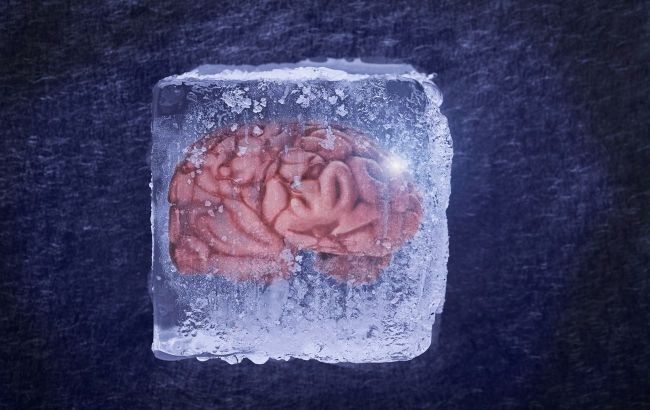Eternal life possible? Scientist explains whether cryonics will help resurrect people
 Will it be possible to revive people through cryopreservation in the future? (Photo: Getty Images)
Will it be possible to revive people through cryopreservation in the future? (Photo: Getty Images)
Biologist and Nobel Prize winner Venki Ramakrishnan analyzed the decade-long attempts of scientists to find the key to eternal life by cryopreserving people after death. Scientists hope that in the future when technology is more advanced, frozen bodies can be revived, according to the Live Science article.
What you need to know about cryopreservation
Cryopreservation involves freezing a person immediately after death. However, freezing biological materials is not so easy, as all living things consist mostly of water. When it freezes, it expands and ruptures cells and tissues.
An entire field of biology, cryopreservation, studies how to freeze samples so they remain viable after thawing. Useful methods have already been developed, such as storing stem cells and other important samples in liquid nitrogen. It has figured out how to safely freeze sperm and embryos for later fertility treatment.
People are frozen immediately after death with the idea of defrosting them later when cures are found for the diseases that caused their deaths.
How the idea to freeze the dead appeared
The idea has been around for a long time, but it gained popularity through the work of Robert Ettinger, a college physics and math teacher from Michigan who also wrote science fiction. Ettinger predicted that in the future, scientists would revive frozen bodies.
In 1976 he founded the Cryonics Institute near Detroit and persuaded more than 100 people to pay $28,000 each to have their bodies preserved in liquid nitrogen.
In 1977, he froze the body of his mother, and then his two wives. Eventually, more than 200 bodies were frozen there to be resurrected in the future. In 2011, at the age of 92, Ettinger died and was also frozen.
Today there are several such cryonics facilities. Alcor Life Extension Foundation, headquartered in Scottsdale, Arizona, charges about $200,000 for whole-body storage.

Frozen body storage chambers at the Alcor Life Extension Foundation (photo: alcor.org)
How freezing works
As soon as a person dies, the blood is drained and replaced with antifreeze, and the body is then stored in liquid nitrogen. Theoretically, this can be done for an indefinite period.
However, there is another method of preservation that involves storing only the brain. Advocates of this method, transhumanists, aim to preserve consciousness after death. For this purpose, the brain is placed in antifreeze.
Transhumanists hope that eventually, technology will advance to the point where information from the brain can be uploaded to a computer. This entity would possess a person's consciousness and memories and restore life. It will not be limited by human needs, such as food, water, oxygen, etc. Thus, consciousness will go beyond bodies and be able to travel anywhere in the universe.
By the way, Elon Musk financially supports projects aimed at "merging" the human brain with computers.
Will these technologies work
There is no evidence that human cryogenics will ever work. There are countless potential problems. For example, immediately after death, there are rapid biochemical changes in every cell of the body due to a lack of oxygen and nutrients. By the time a person is prepared for cryopreservation and frozen, some time will have passed. Therefore, the state of a cryogenically frozen body is not the state of a living person.
Proponents of cryonics claim that scientists just need to preserve the physical structure of the brain. As long as it is preserved to the point where we can see the connections between all the billions of brain cells, we can reconstruct the entire human brain.
Brain revival
Mapping all the neurons in the brain is a new science called connectomics. While this method has achieved great success, researchers are still trying to address the shortcomings in "reviving" flies and other tiny organisms. However, there is currently no know-how to properly maintain the brain of a corpse.
Only recently, after many years of research, have scientists managed to preserve the brain of a mouse. This was done by injecting embalming fluid into it while the mouse's heart was still beating - this process killed the mouse.
None of the cryonic companies have provided evidence that their procedures preserve the human brain in such a way that scientists could obtain a complete map of its neural connections in the future.
Even if we could create such a map, it would not be sufficient for simulating the brain. The idea of each neuron as a simple transistor in a computer circuit is hopelessly naive.
Why this idea is utopian
According to Venki Ramakrishnan, every cell in the brain executes a constantly changing program involving thousands of genes and proteins, and its connections with other cells constantly change. Mapping the connections in the brain would be a major step forward, but it would not allow us to reconstruct the actual state of the frozen brain, let alone predict how it will think.
Another significant argument is that the structure of the brain and its nature itself are formed by its connection to the rest of the body.
Our brain has evolved together with the rest of the body and constantly receives sensory signals from it and acts on them. It is also unstable: new connections are added daily and pruned at night while we sleep. There are both daily and seasonal rhythms, including the growth and death of neurons, and this constant remodeling of the brain is poorly understood.

The way sci-fi writers imagine the storage of frozen people in the future (photo: teletype.in)
A brain without a body would be a completely different thing. The brain is controlled not only by electrical impulses passing through connections between neurons. It also responds to chemical substances both within the brain and from the rest of the body. Its activity is largely governed by hormones produced in the organs and includes basic needs such as hunger, as well as internal desires. The satisfactions our brain receives are mostly bodily.
If we wait until we grow old and die, will preserving the old brain make sense?
Transhumanists argue that these problems could be solved in the future. Their main argument is that the brain is simply a computer, albeit more complex than technology.
Of course, the brain is a computational organ, but the biological state of its neurons is just as important as the connections between them to reconstruct its state at any given moment.
According to Venki Ramakrishnan, there is no evidence that a frozen body or brain can be revived.
This material is for informational purposes only and should not be used for medical diagnosis or self-treatment. Our goal is to provide readers with accurate information about symptoms, causes, and methods of detecting diseases. RBС-Ukraine is not responsible for any diagnoses that readers may make based on materials from the resource. We do not recommend self-treatment and advise consulting a doctor in case of any health concerns.

